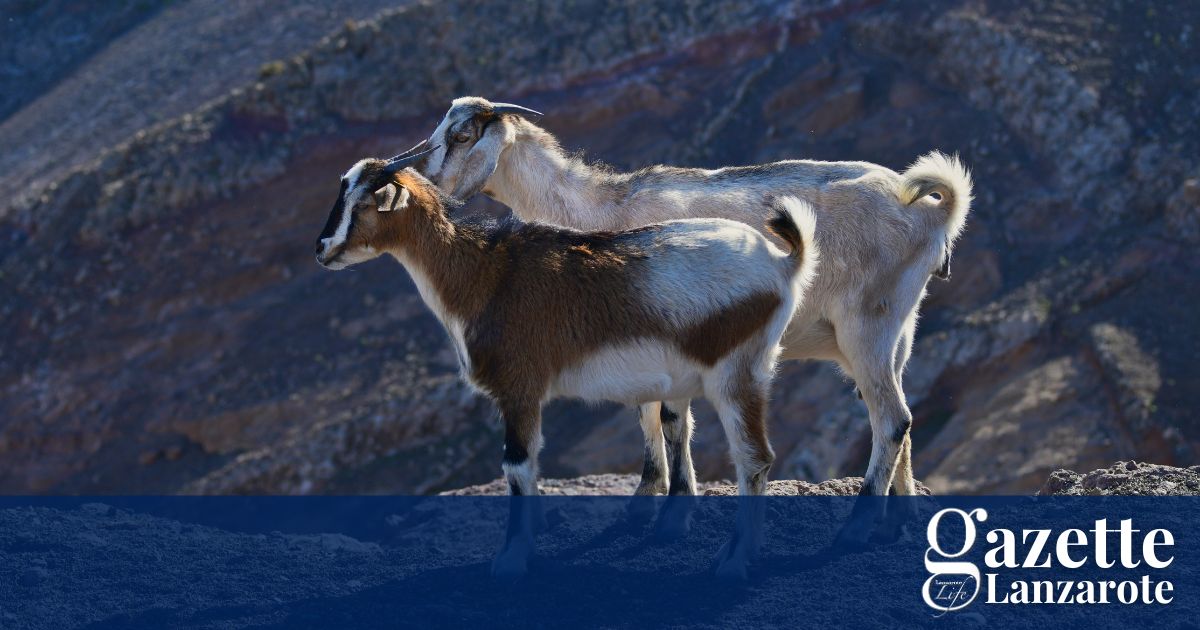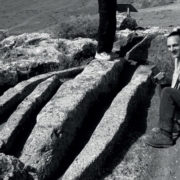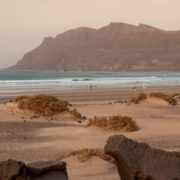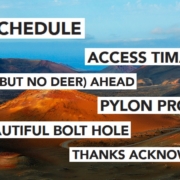Lanzarote’s goats are, literally, the GOATS of the islands, an animal that has defined life, language and landscape for thousands of years.
Archeological remains show that the original inhabitants of the Canary Islands brought goats, as well as sheep and pigs, with them from the African mainland.
Those goats would become by far the most important animal on the islands, providing milk and meat; skins for clothing, bags, and bottles; bones and horn for tools, and manure for agriculture.
Goats manage to provide all this without the need for specially cultivated pastures. Instead, they were turned loose on hills and mountainsides, where they foraged on the sparsest of vegetation.
The rounding-up of goats is an activity that was often assisted by dogs, and goatherds would use long poles to vault over crevasses and gullies – a sport that continues today. On the island of La Gomera, goatherds would communicate over the valleys using a unique whistled language that still exists.
Goats are sometimes blamed for desertification of the islands, but they aren’t initially to blame. First it was humans, who cut down existing trees, woodlands and shrubs for wood and fuel. Goats then ate the seedlings and saplings before they could grow again, and without root systems to bind it, the soil ended up drying out and being eroded by the wind.
The current goat capital of the Canaries is Fuerteventura, home to the Cabra majorero – the native Canarian goat species. At last count, there were 75,000 goats on Fuerteventura, while Lanzarote had 18,000.
This species of goat, like cats, has several variations of colour within the species. A 1995 book listed 31 colours of goat, including saddleback, yellow, saffron, berry, white, clear, waxed, seagull, Dutch, Mallorcan, purple, Moorish, black, brown, painted, pink, blonde and ink.
Lanzarote’s goats are mostly kept in large compounds nowadays. There is an extensive goat farm at the Agricultural Centre between Teguise and San Bartolomé, and another large farm on the hilltop overlooking Femes.
The main contribution made by goats to the island’s economy is dairy products. Lanzarote goats’ cheese is delicious, widely consumed and among the best of its kind in the world, while the fresh milk and yoghurts have also become more popular in recent years.
It’s also possible to eat cabrito (kid) in local restaurants. It’s a tasty, savoury meat, very lean and served on the bone.
On Lanzarote, it’s getting rarer and rarer to see the animals in semi-wild conditions, but if you do want to look for them the Ajaches mountains overlooking Playa Blanca are one of the best places to go.
In these remote highlands, families of goats live happily away from human contact until they are rounded up. In the meantime, they live a perfectly natural existence, grazing on the scant vegetation, untroubled by predators and loving the sure-footed mountainside existence that they are perfectly evolved for.
The little goat has left me
Goats have also contributed to the language of the islands. One of the most common surnames on the Canaries is Cabrera, the Spanish word for goatherd, and several place names on the islands are also derived from goats.
The capital of Fuerteventura, Puerto del Rosario, was once known as Puerto de Cabras because of the island’s trade in goatskins. The name was changed because goats have a reputation for being crazy and sexually- active, but some younger residents of the town have tried to reclaim it for precisely those reasons, reinforcing the cult status of goats on Fuerteventura.
“Como una cabra” (like a goat) is a common phrase to mean “crazy”, while “se me fue el baifo” (the little goat has left me) means you’ve lost your train of thought.











Leave a Reply
Want to join the discussion?Feel free to contribute!